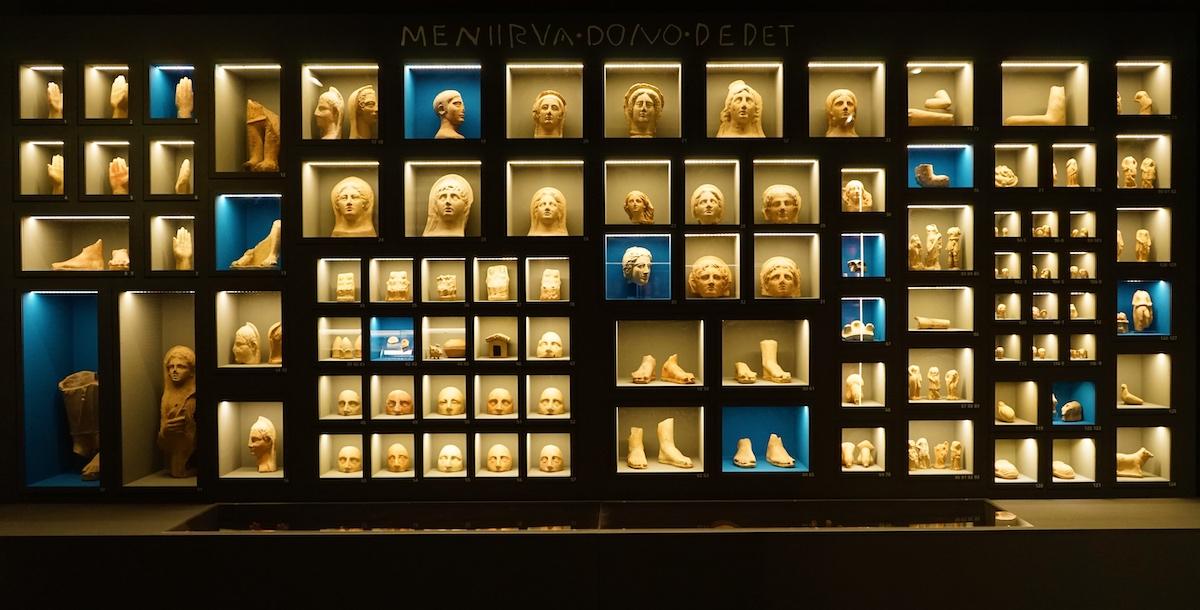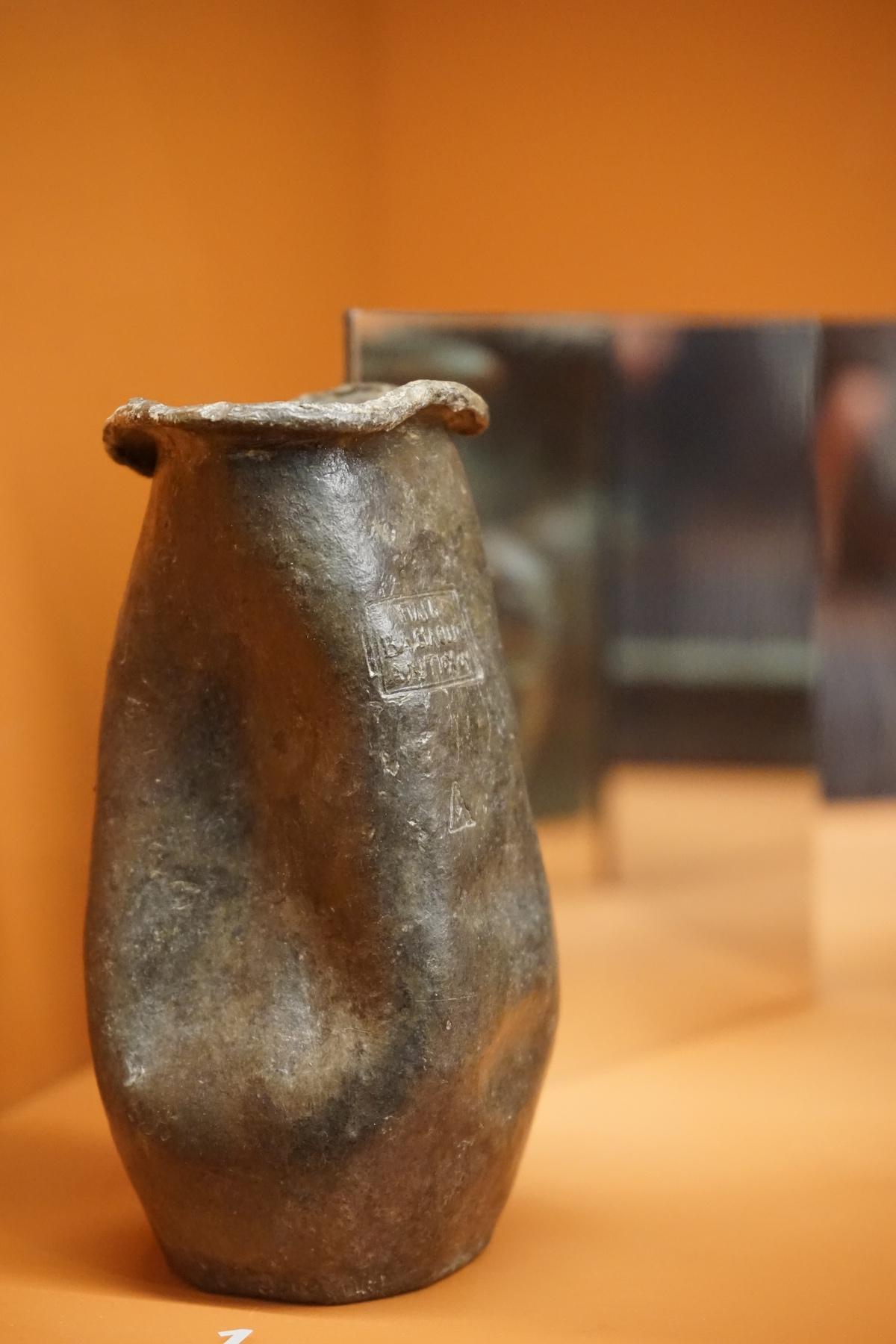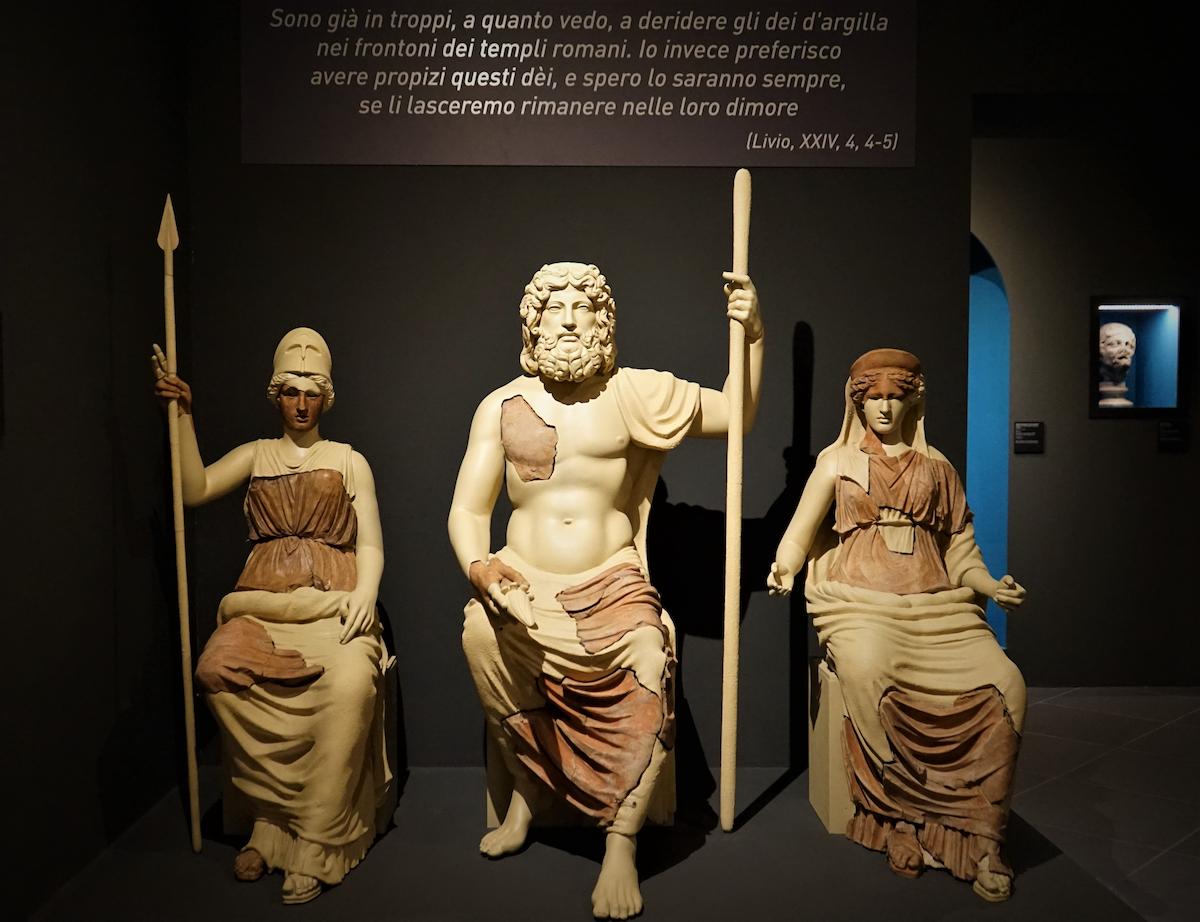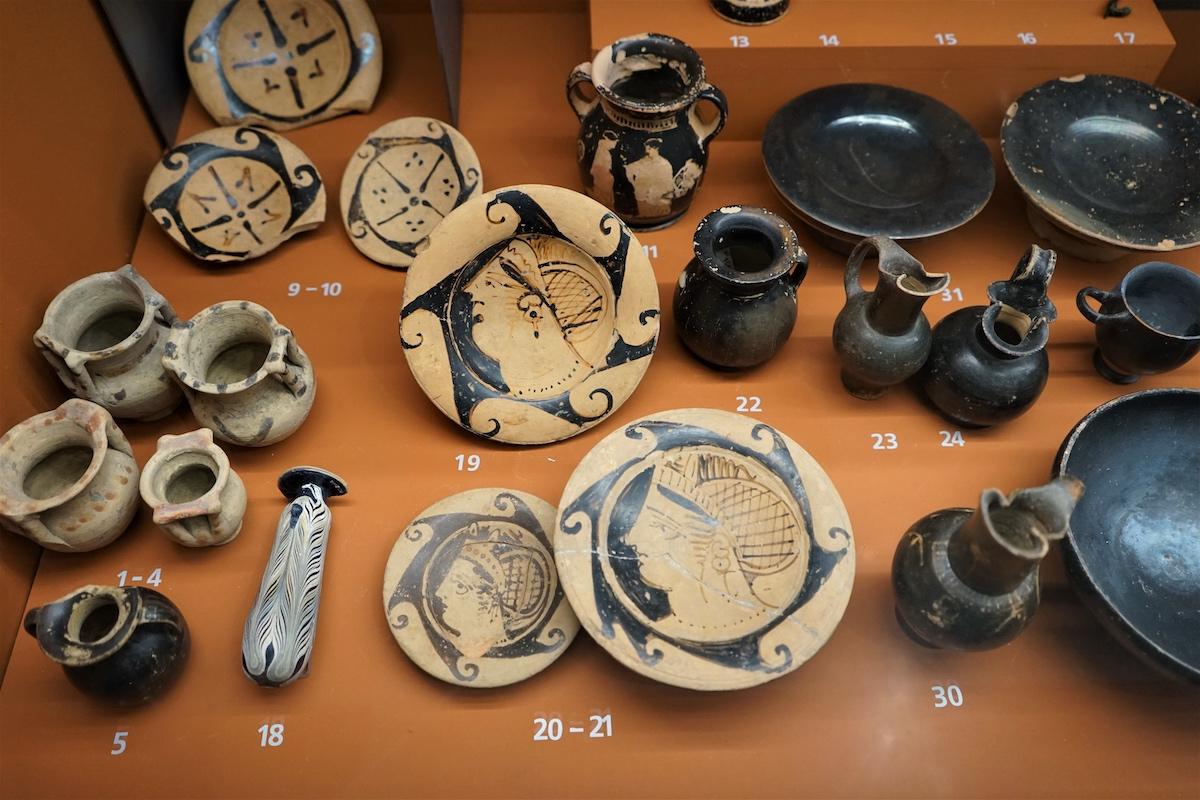The exhibition aims to chart ‘the characters and transformations of Roman society’ in the Republican period. In this, the curators have set themselves an ambitious task. The Roman Republic spanned five centuries and included significant cultural, artistic, and societal changes that any curator would be challenged to cover. To tackle the subject, the displays are divided into four themes ‘Sanctuaries’, ‘Palaces and Urban Infrastructure’, ‘Production and Trades’, and ‘Manifestations of Identity, Prestige and Social Ascendancy’.
It is too much. The section ‘Sanctuaries’ is the most comprehensive and successful, including a mixture of personal devotional objects as well as decorative elements of public temples. ‘Palaces and Urban Infrastructure’ purports to examine the evidence for water supply in Rome before the construction of the aqueducts, but the focus is more on the pottery that was found dumped in the various wells rather than on water per se. The ‘Palaces’ element is represented solely by some pieces of early mosaic flooring from houses underneath the Tabularium – interesting to those who study Roman architecture, but no doubt of less obvious interest to those who don’t know what the Tabularium was.




























